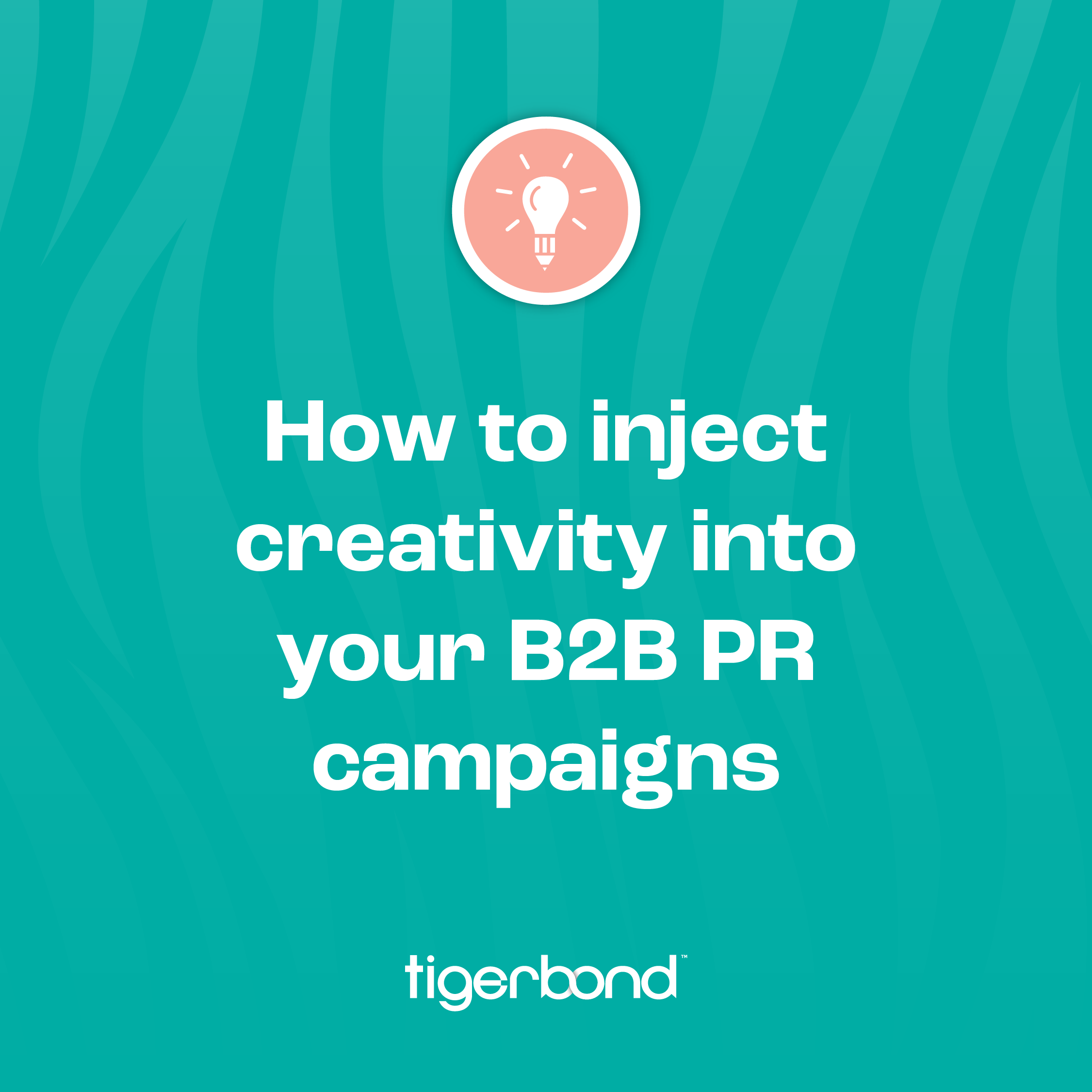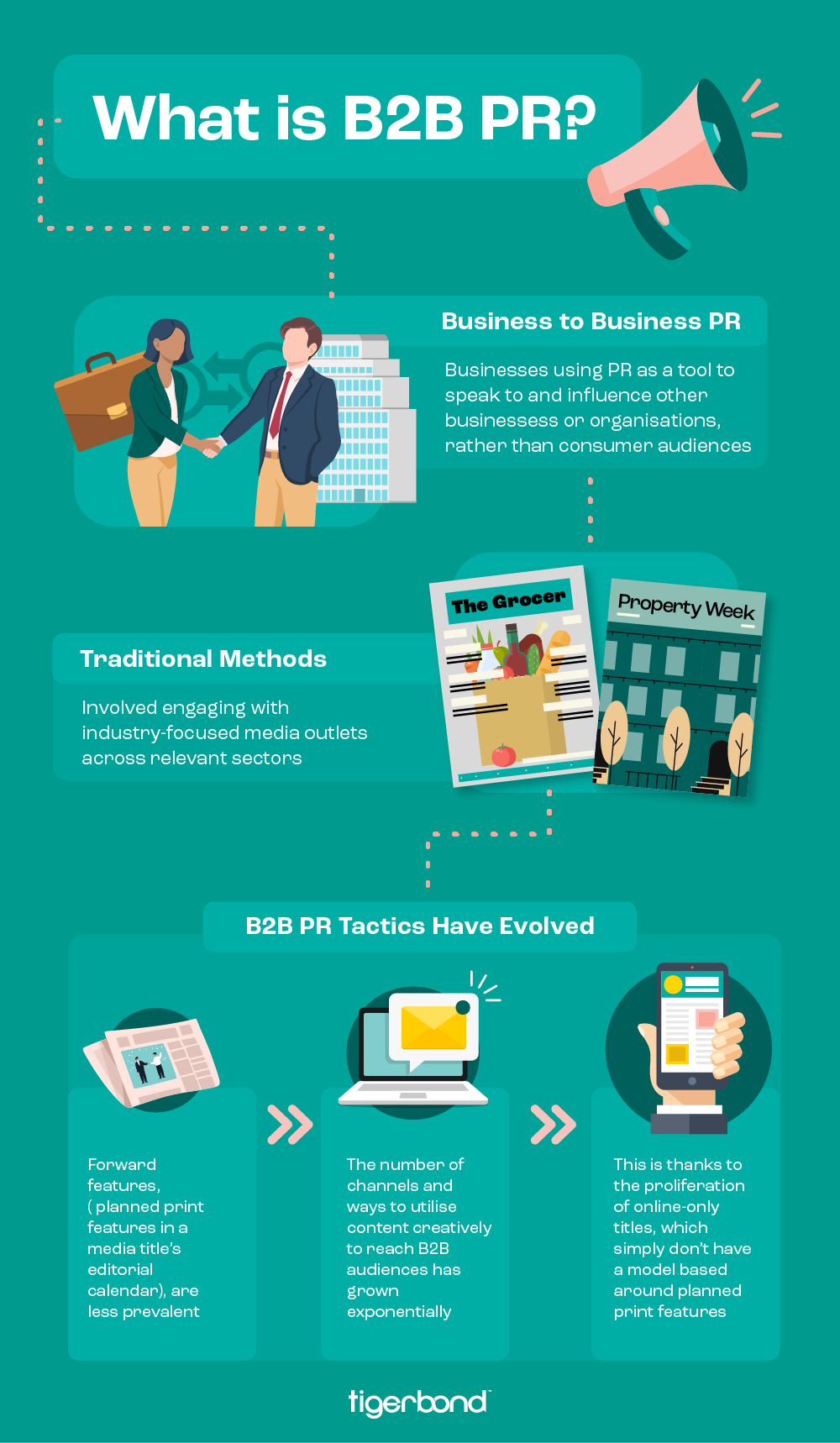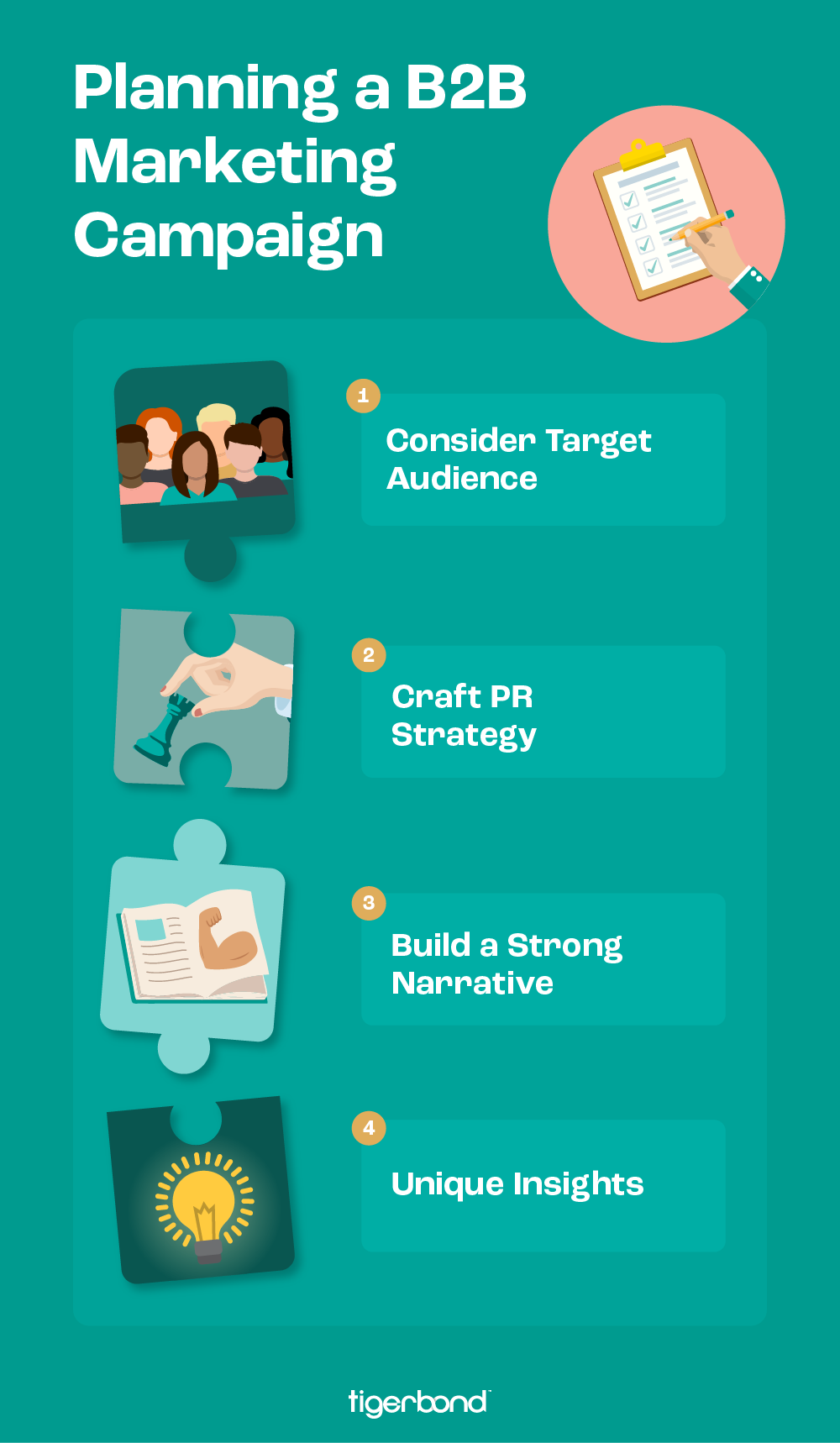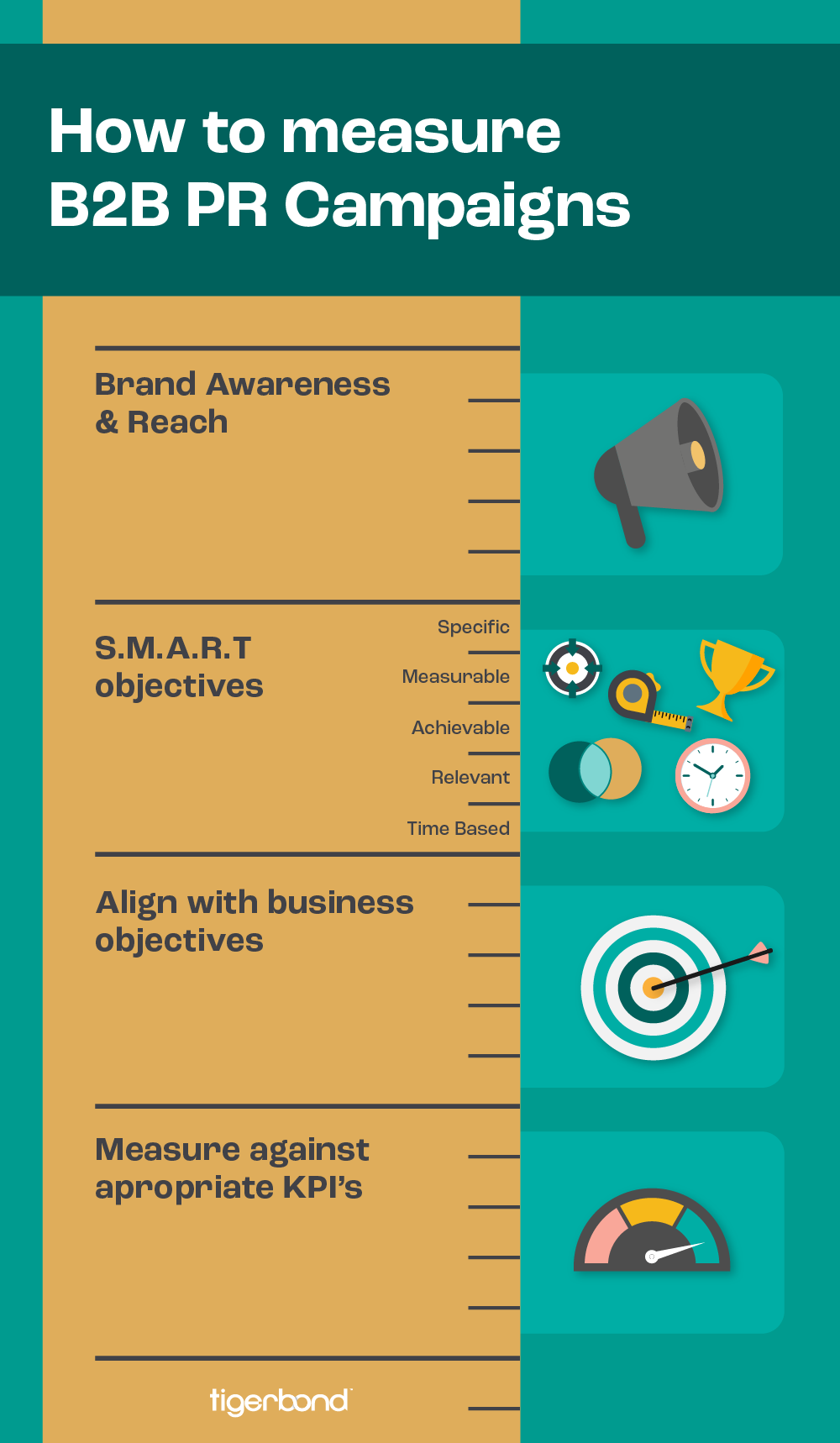
Creative B2B PR campaigns can be exceptionally powerful for businesses of all stripes. They can help drive brand awareness and salience with key B2B audiences, position senior business leaders as industry experts and drive interest in the products or services businesses offer.
At tigerbond, this is something we do every day for our clients.
Whether it be tackling the key issues in the leveling up agenda for the UK’s largest housing association, Clarion Housing Group, or working with the UK Cyber Security Council to introduce and build support towards a new professional standard in the sector – we work across a variety of rewarding B2B PR campaigns every day.
Getting Started: What is B2B PR?

B2B PR is business-to-business PR and is a broad concept.
While some principles traditionally associated with the discipline have stayed the same, many have changed.
However, one of the core principles that has remained – and is a fundamental differentiator between B2B and B2C PR – is the audience.
It involves businesses looking to use PR as a tool to speak to and influence other businesses or organisations, specifically by engaging their senior decision makers.
Traditionally, B2B PR involved doing this by engaging with industry-focused media outlets across relevant sectors.
So, for instance, a key title for a food manufacturer looking to reach those deciding what to stock on supermarket shelves would be The Grocer.
For a property developer looking to speak to the built environment sector about the key issues around e-carbonising the UK’s housing stock, they might look to Property Week, or Building magazine.
This fundamental distinction remains but it is fair to say that some of the tactics traditionally associated with B2B PR have evolved.
The Effect of the Changing Media Landscape
In this sense, the B2B PR discipline is no different to PR more broadly, which has needed to continually to adapt to a changing media landscape and the evolving ways in which we consume content.
For example, forward features – planned print features in a media title’s editorial calendar – are less prevalent than they once were.
They haven’t disappeared completely – The Grocer and the regional Insider Media titles still have excellent forward features calendars – but they are less central to the B2B suite of PR tactics than they once were.
Part of this is thanks to the proliferation of online-only titles which simply don’t have a model based around planned print features.
The other half of the story is that the number of channels and ways to utilise content creatively to reach B2B audiences has grown exponentially, inevitably reducing reliance on any one particular tactic.
Creative B2B PR: How do you plan a B2B marketing campaign?

Amid a shifting media landscape, ensuring B2B marketing campaigns are underpinned by sound strategy is crucial.
With more channels available than ever before to reach target audiences, ensuring the right mix is chosen in the first instance to maximise the impact and effectiveness of communication is key.
This needs to be complemented with a PR strategy that includes:
- Key Messaging
Key messages should align with brand positioning as well as resonating with the news agenda.
If there are key topics or issues a client wants to provide expert commentary on, then it’s important to build out a strong narrative around these, which can then be used to approach media in a way which builds credibility.
- Insights & Data
Insight is key to building a brand presence and voice that is different from competitors.
Doing so gives a brand of point of difference – a reason to be remembered.
It can pay dividends to invest the time in identifying white space, a position in which a brand can sit that ensures it is providing something to the market that its competitors aren’t.
That might be through talking about a salient issue which isn’t being properly addressed – or by embracing a form of content which is suited to the habits of a target audience but isn’t currently being used widely.
Finding opportunities to uncover new insights to inform the detail of content itself, perhaps through a national survey or through a treasure trove of data and insight a business might already be sitting on, also plays an important role in creating content that resonates.
Combining these two components can really help a B2B campaign stand out and lead to genuinely creative concepts and themes being delivered.
Tactics & Timing
Tactical delivery represents another great opportunity to inject exciting creative ideas into B2B communications too.
There is certainly still a place for more traditional tactics, such as press releases, media briefings, expert commentary pieces and industry roundtable discussions.
However, there is no reason why working in B2B campaigns should restrict activity to these stalwarts.
Now, more than ever, it is important to consider how content can be stretched into different forms and channels to maximise reach and engagement.
Can the key points from a thought leadership piece be extrapolated into a sharable infographic or animated video suited for targeting decision makers directly on LinkedIn, for example?
Perhaps a branded webinar could be the best way to share updates with a carefully selected group of stakeholders ahead of a wider press announcement.
When it comes to PR campaigns, there’s no reason to limit creative thinking and new ideas just because business decision makers rather than a consumer audience is being targeted.
Brands should still strive to stand out for the right reasons through their B2B PR – and embracing creative and novel ways to engage audiences can play an important role in helping them achieve this.
Measuring B2B PR Effectiveness: How to measure B2B PR campaigns?

Effective campaign measurement and evaluation is critical to demonstrating the value B2B PR delivers.
Of course, the specific metrics used to achieve this will naturally differ depending on specific briefs. KPIs may be more geared towards measuring brand awareness and reach within specific markets.
They could be about securing share of voice on a pertinent issue or building the profiles of specific spokespeople to help position the business and individuals as thought leaders in a certain area.
Irrespective of this, it’s important to agree SMART communications objectives at the outset and align these to business or organisational objectives.
This ensures that progress against these objectives can be measured through appropriate KPIs.
It also means that, right from the start, communications objectives are baked into, and aligned with, the commercial objectives of the business or organisation.
Creating this clear link is crucial when it comes to demonstrating the value of B2B PR and can make the difference when decisions are being made on how to split hotly contested marketing budgets.
To learn more about our rewarding B2B PR campaigns, contact tigerbond today. We specialise in planning and activating campaigns that make a lasting impact.
TL;DR:
- This blog explores the importance of injecting creativity into B2B PR campaigns to drive brand awareness, position leaders as experts, and generate interest in products/services.
- It discusses the fundamentals of B2B PR, the evolving tactics in the industry, planning effective B2B marketing campaigns, and measuring their success.
- The blog emphasizes the need for strategic messaging, finding white space, utilising various content formats, and aligning PR goals with business objectives.
- To stand out in B2B PR, brands should embrace creative ideas and engage audiences through innovative approaches.
